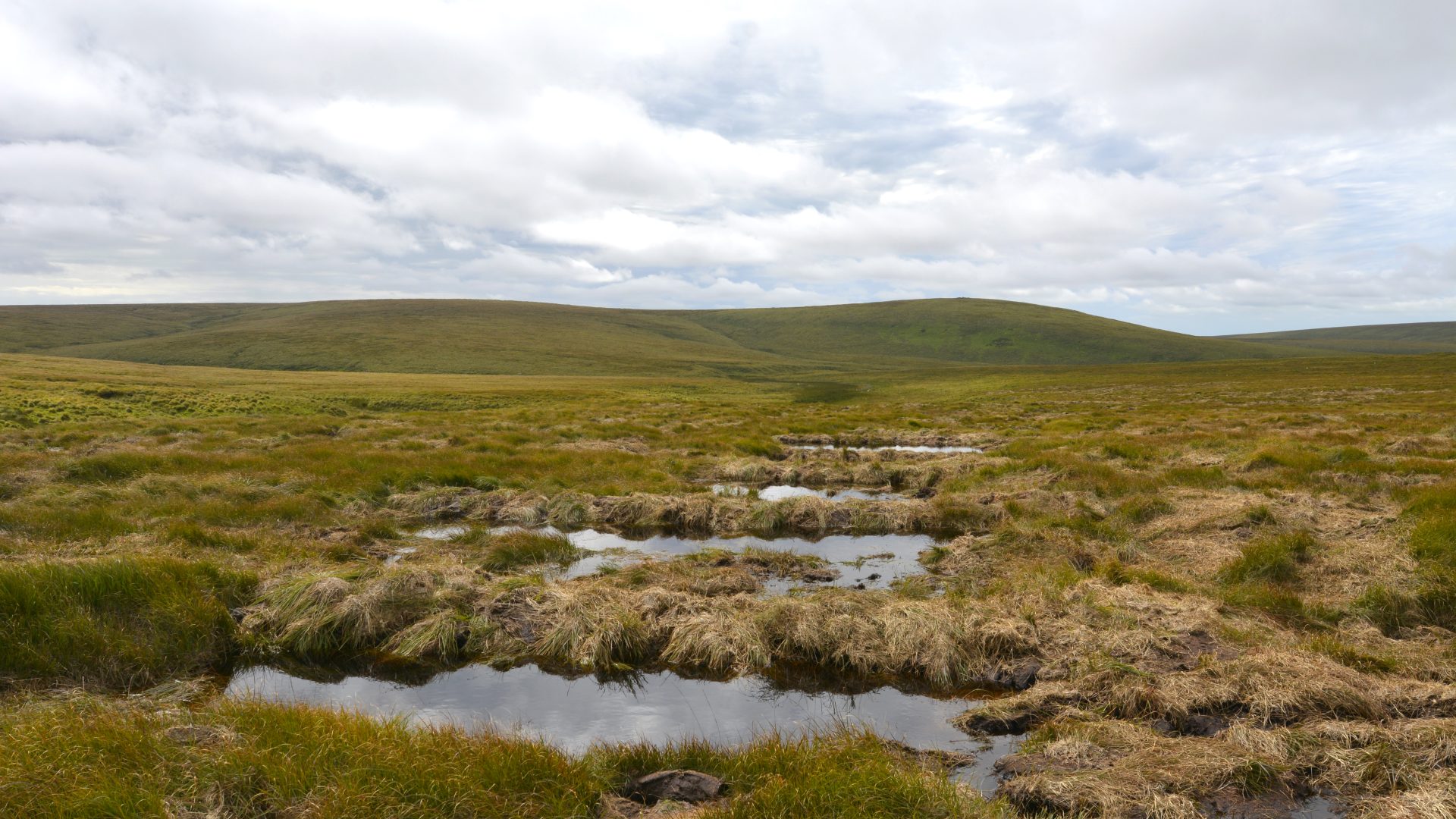
All about peatland
Published: 25 April 2024
When we think of habitats in National Parks, we might think of dramatic mountains, or nature-rich waterways. The term ‘carbon storage’ might bring to mind forests and woodland planting projects, but a habitat that is both visually stunning and precious for nature and climate is perhaps one of the most complex and most threatened. This habitat is peatland.
43% of land in English National Parks and 8% in Welsh National Parks is peatland, and in both England and Wales, National Parks have a higher peatland coverage than the rest of the country. It is a vitally important habitat for people, nature and climate.
What is peatland?
Peatland is a name for types of wetland common in National Parks such as Dartmoor, Exmoor, and Eryri. There are three main types of peatland; blanket bogs, raised bogs, and fens. The main characteristic of all peatland is the presence of peat — partially decomposed plant material that is distinct from other types of soil because of the slower rate of decomposition. Plants common in peatland include heathers, grasses and sphagnum moss, which is unique to peatland and can hold huge amounts of water.
Peatland for humans
Due to the wet nature of properly managed peatland areas, they are an effective natural protection from flooding. Peatland’s hugely water-absorbent plants like sphagnum can store excess rainwater and absorb run off, preventing heavy rain from causing localised flooding in nearby towns and villages. Water from peatland also makes up a large proportion of our drinking water in England and Wales since it requires less treatment than water from other sources.
Peatland for wildlife
Because peatland is a unique type of wetland, many plants and insects found there are not found anywhere else. Maintaining and restoring peatland is hugely important for the survival of species such as sphagnum and bog hoverflies.
Peatlands also provide precious breeding habitat for ground nesting birds. In the Peak District, upland blanket bogs provide homes for golden plover and in Dartmoor peat wetlands are crucial in efforts to restore curlew populations.
Peatland for climate
Peatland also has huge potential to help us fight climate change by sequestering carbon: removing carbon from the atmosphere and storing it in the ground. As peatland plants decompose, the carbon dioxide (CO2) they absorbed during their life becomes stored in peat, where it does less damage than in the air.
The carbon stored in peat also means that damaged peatlands are a huge risk to the planet, as they release all that stored carbon back into the atmosphere as CO2 emissions. If properly managed, peatlands in National Parks have the potential to contribute significantly to England and Wales meeting their goal of becoming carbon neutral by 2050.
Maintaining peatland
Though peatland is hugely important, most of English and Welsh peatland is in poor condition. Much of the damage done to peatland happens when it becomes too dry for peat to be created effectively. Introducing artificial drainage, burning and tree planting can all damage peatland’s ability to store water, provide a home for wildlife and absorb carbon.
There are many projects all over our Protected Landscapes doing great work to re-wet and restore Peatland. Many have been nominated for our National Park Protector Awards, including Moors for the Future in the Peak District and the South West Peatland Partnership in Exmoor and Dartmoor. At Campaign for National Parks, we are calling for action for projects like these to properly supported and scaled up to deliver peatland’s benefits for people, nature and climate.
Peatland Recovery - How a landscape scale project is bringing this habitat back to life in Dartmoor
